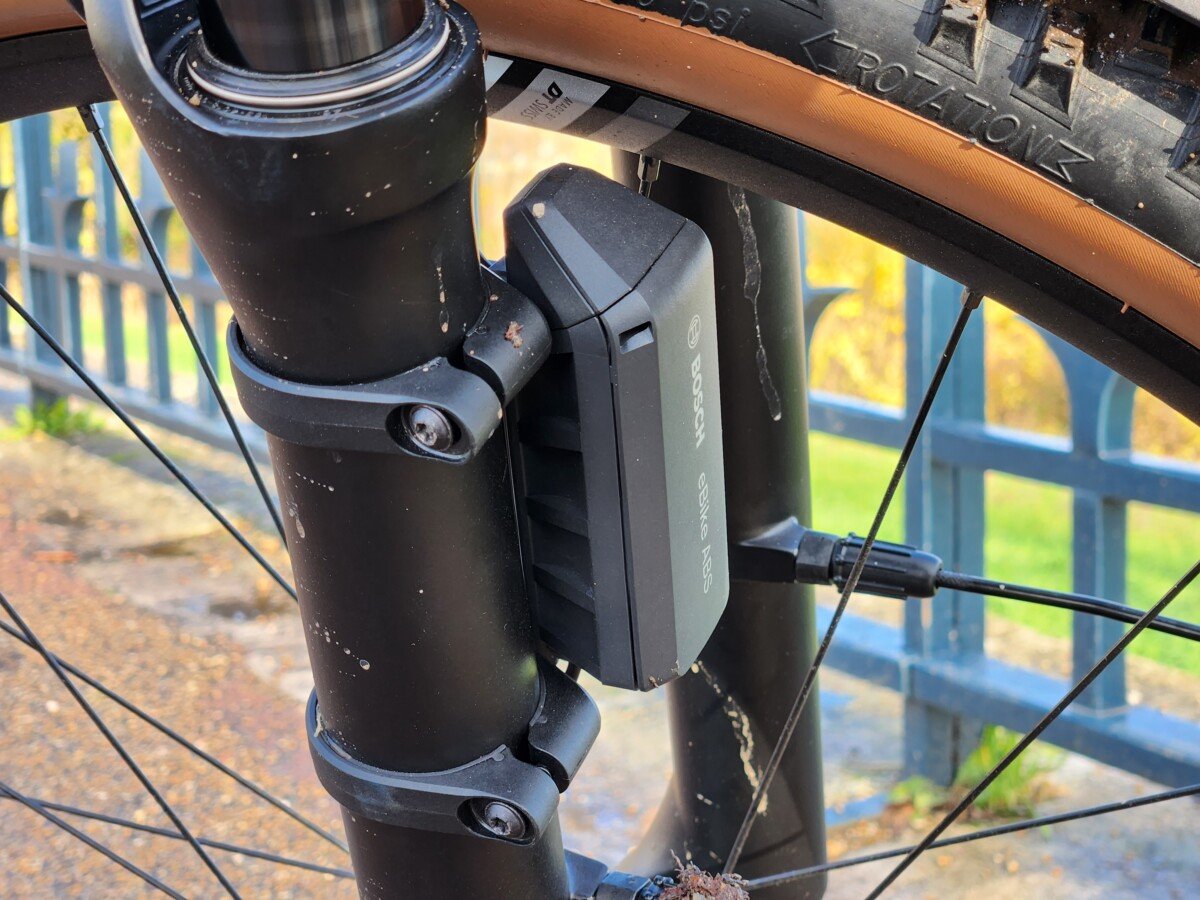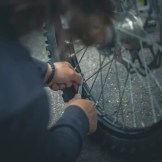We were able to test Bosch’s ABS (anti-lock braking) system for electric bikes for a morning, over a distance of about twenty kilometres. What are our first impressions? Is it relevant? Here is a little feedback.
Frandroid was invited by Bosch to test their brand new ABS system (Anti Blocking System, i.e. Anti-blocking system in French) for electric bikes. This 2022 version has benefited from a more advanced design, reducing the size of the control box by 77%, for a lighter weight of 55%, indicated the brand in July.
What is an ABS system for? We will come back with a complete technical file by the end of the year in order to explain the ins and outs to you. What must be remembered today is that an ABS system prevents a wheel from locking during heavy braking, just like on cars. At the front, it avoids the “suns”, at the rear, it prevents the tire from chasing.
When the front brake takes priority
In a test supervised by Bosch, Frandroid was able to test this brand new system on a 25 km route, from the Champs-Élysées to the Bois de Boulogne via the steeper terrain of the Parc de Saint-Cloud. Above all, the test conditions were optimal for undermining the system: tar, wet pavement, leaves, slush, gravel, grass. In short, the total.
During this outing, we were riding a semi-rigid electric mountain bike (front suspension only), equipped with the most powerful Bosch motor in the range – the Performance Line CX and its torque of 85 Nm –, hydraulic disc brakes and of tires cut for mountain bikes supplied by Schwalbe.

Be aware that the Bosch ABS system only intervenes on the front tire. At the rear, intense and sudden braking inevitably blocked the wheel, which hunted on the right or left side. However, the relevance and efficiency of Bosch technology allowed us to abandon the rear brake in favor of the front brake only. Explanations.
This new generation ABS brings great added value to the safety of the bike. Today, braking reflexes push us to use the rear brake, both to better control our bike, but also to avoid falling back on the front brake for fear of going over the cycle – the famous sun. Here it’s the opposite.
A psychological and mechanical phenomenon
The ABS software and sensors manage to adapt the braking force automatically. Results: whether you brake gently or intensively with the front brake, on wet ground, wet grass or slippery leaves, the e-bike does not flinch and retains the most impressive stability and handling – only one small scare to report on a slightly tight bend.
However, the braking remains powerful and reassuring. We also carried out a comparison over a predefined distance – a straight downhill line – with ABS and without ABS. With the system, the e-bike allows you to come to a sharp stop without a hitch and with some control of your mount. All while pressing “fully” on the brake levers. It is still necessary to brake with both brakes.

Source: Bosch

Source: Bosch

Source: Bosch
Without ABS, two phenomena occur. The psychological phenomenon in the first place: tumbling at 30 km/h and having to brake suddenly on earthy and wet ground does not really make you want to. Secondly, the mechanical phenomenon: the braking distance is longer, and above all, the control of the vehicle is much more wobbly and uncertain.
To sum up, Bosch’s ABS is clearly convincing in more ways than one, between a short response time, wheel lock non-existent (or almost) in our eyes and an ability to adapt to a large number of environments and coatings. All this without spoiling the experience of driving an electric bike or mountain bike. Also, this allows you to considerably reduce your speed, without flinching, before entering a bend in complete safety.
For all types of electric bike
At the start, it can be normal to be cautious or chilly at the idea of hitting the front brake when necessary. In the end, it’s just a matter of habit and feeling. The adaptation is very short, even exhilarating at the idea of taking control of a new and efficient braking method.
If its effectiveness on wet ground is no longer really to be proven – in terms of our test at least – on dry ground, the system adapts logically without problem. Such a system probably makes as much sense on an eMTB as it does on a gravel or electric city bike. As long as security is improved, that’s the main thing.

Source: Bosch

Source: Bosch

Source: Bosch
In this regard, Bosch has developed different types of ABS depending on the bike segment: ABS cargo for electric cargo bikes, ABS Touring for city bikes, ABS Allroad for hybrid bikes and finally ABS Trail for e-MTBs. The technical file to come will allow us to better understand the differences between each, both in theory and in practice.
A cost on the final grade
According to a study by Bosch, up to 29% of accidents involving pedelecs could be avoided per year if the bicycles in question were equipped with an ABS system. From there to making them compulsory on each connected cycle sold, there is still a long way to go. But giving users the opportunity to try it out and adopt it is already an interesting first step.
Nevertheless, an ABS for an electric bike is an expensive and technical element: integrating one necessarily raises the final score – up to 400 euros, we were told. It is important to face the facts: such technology is not necessarily intended to be used on entry-level electric bikes.
Bosch is not the only manufacturer to design ABS for electric bicycles: Blubrake has also made it its spearhead, and works in particular with Shimano, a key player in the world of bicycles.
To follow us, we invite you to download our Android and iOS application. You can read our articles, files, and watch our latest YouTube videos.


